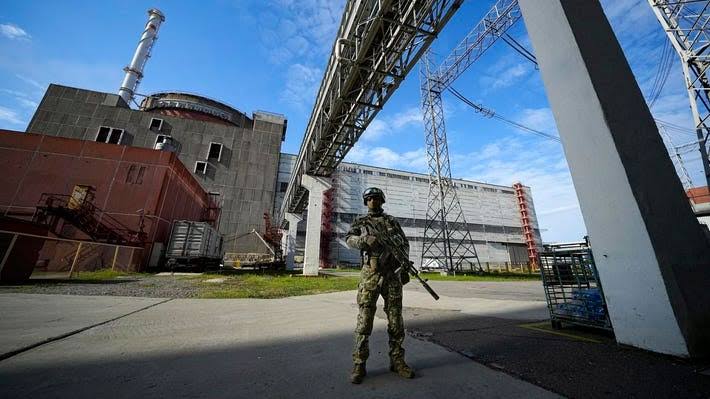Ukraine and Russia on Wednesday, July 5 accused each other on Wednesday July 5, of planning to attack the world’s largest nuclear power plant in Zaporizhia region of Ukraine.
The Zaporizhzhia Nuclear Power Plant has been on knife’s edge since Moscow’s forces took control of it early in the war. Ever since then, Moscow and Kyiv have traded blame for shelling the facility and accused each other of nuclear terrorism.
Regular power outages resulting from shelling made it impossible to operate the plant safely, leading to the shitting down of its six reactors .
Over the last year, the U.N.’s atomic watchdog repeatedly expressed alarm over the possibility of a radiation catastrophe like the one at Chernobyl after a reactor exploded in 1986.
Ukraine has alleged more recently that Moscow might try to cause a deliberate leak in an attempt to derail Kyiv’s ongoing counteroffensive in the surrounding Zaporizhzhia region. Ukrainian authorities accused Russia of blowing up a dam in southern Ukraine last month with a similar aim, while Moscow blamed Ukraine for its destruction.

Citing the latest intelligence reports, Ukrainian President Volodymyr Zelenskyy alleged Wednesday, July 5 that Russian troops had placed “objects resembling explosives” on top of several of the plant’s power units to “simulate” an attack from outside.
“Their detonation should not damage power units but may create a picture of shelling from Ukraine,” according to a statement from the general staff of Ukraine’s armed forces.
Kremlin spokesman Dmitry Peskov raised the specter of a potentially “catastrophic” provocation by the Ukrainian army at the nuclear plant.
“The situation is quite tense. There is a great threat of sabotage by the Kyiv regime, which can be catastrophic in its consequences,” Peskov said in response to a reporter’s question about the plant. He also claimed that the Kremlin was pursuing “all measures” to counter the alleged Ukrainian threat.
Russia and Ukraine have provided no evidence to support their claims of an imminent threat to the facility.
The International Atomic Energy Agency has officials stationed at the Russian-held plant, but in May the Russian government ordered all it’s troops to leave the power plant by July 5.
UN nuclear agency, IAEA Director General Rafael Mariano Grossi said his agency’s most recent inspection of the plant found no activity related to explosives, “but we remain extremely alert.”
“As you know, there is a lot of combat. I have been there a few weeks ago, and there is contact there very close to the plant, so we cannot relax,” Grossi said during a visit to Japan.
“Our experts must be able to verify the facts on the ground. Their independent and objective reporting would help clarify the current situation at the site, which is crucial at a time like this, with unconfirmed allegations and counter allegations,” Grossi said in a statement.













